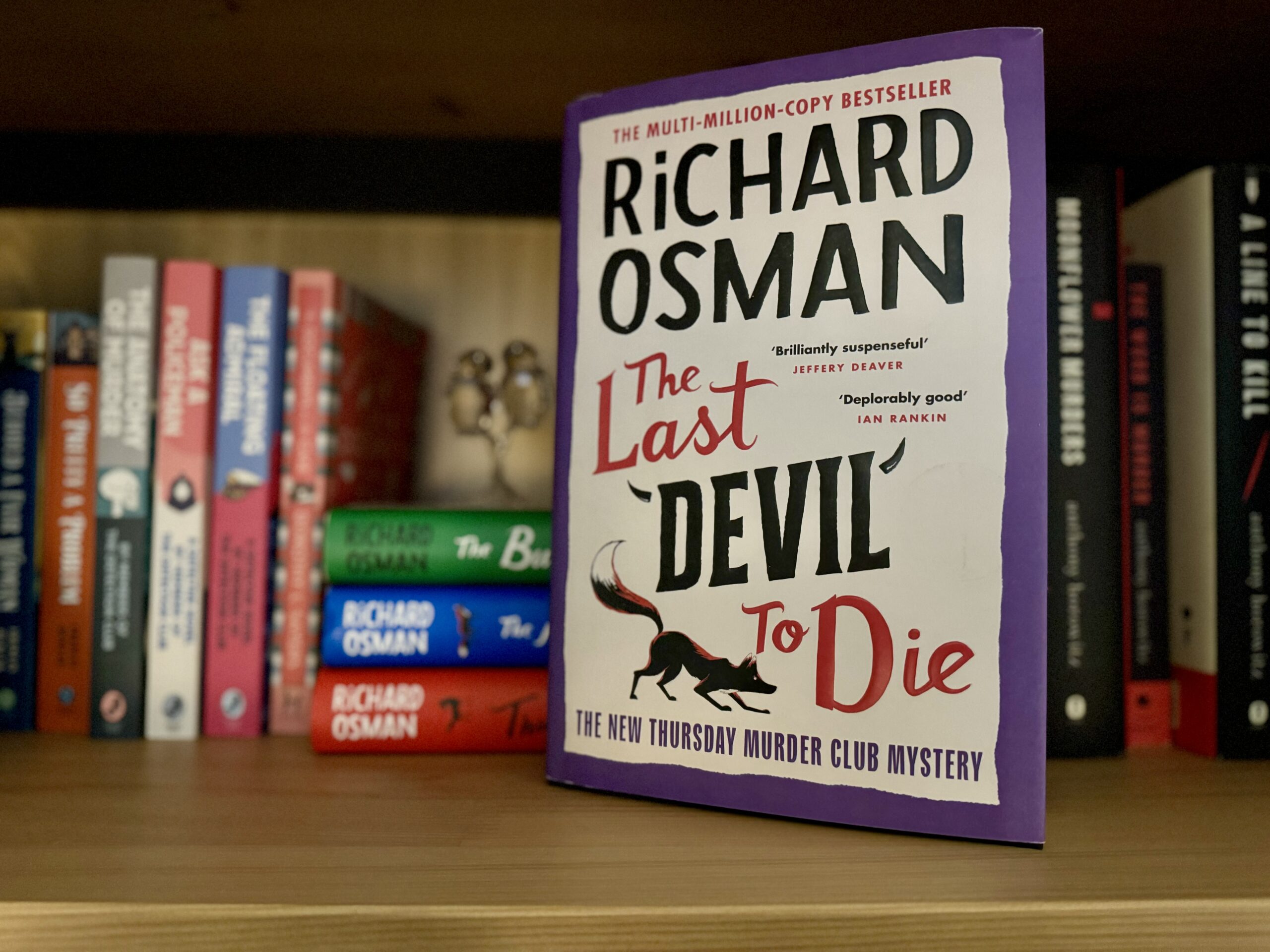I know I’m not alone in my love for the Thursday Murder Club series. Ever since I read the first book, I knew that I’d return to this well as many times as Mister Osman let me. But even the best-written series can overstay their welcome, and one of the “danger zones” is entry four. After all, three stories can compose an easy arc; at a the very least, one can keep going up with new ideas to cover. In this series, we’ve expanded the cast, dived deeper into secondary characters, and pursued more high-key plots. But what happens when you run out of fast ways to inject novelty?
So – you could say I was nervous about The Last Devil to Die, the latest entry in the series. What if it were simply… mediocre? I’m delighted to say that Richard Osman has avoided many Book Four traps, instead delivering a mystery that’s fun and a story that’s poignant. It feels both like the story and characters we love, and reflects important growth for the cast and the series. But how does he pull it all off?
An inclusive return to the core…
It starts with the references. The Last Devil to Die is definitely a book meant to be read as part of a series. While there’s technically enough scaffolding to help a new reader understand references, a lot of the fun is in revisiting old connections. Beyond the core crew, we see the return of Chris and Donna, Patrice and Bogdan, even Connie Johnson. And the text is full of little references to prior adventures, from diamonds in the tea-kettle to the hectic club meeting schedule at Cooper’s Chase.
More so than the throwbacks, we see a return in focus to the core crew – Elizabeth, Joyce, Ron, and Ibrahim. For me, this is a welcome return to form. I started the series falling in love with these characters and their odd-quadruple dynamic. While it was interesting to branch the story to explore, for example, Donna and Chris, I must express some relief that we’re getting to spend more time just following these four in their day-to-day detective work (and other shenanigans). Osman does a great job of realizing each of them, bringing their characters to life beyond just simple stereotypes and archetypes.
…and a welcome evolution
One of the biggest delights of this book, as with other entries in the series, is getting to see our senior sleuths written as people. And while in earlier books, that simply meant “not all old people are the same”, here we get to see these characters evolve. Osman effectively splits the crew, giving Elizabeth an immense personal challenge to deal with, and allowing the rest to get on without her. And in doing this, it’s great to see how far these characters have come.
Start with Elizabeth. In The Thursday Murder Club, Elizabeth served as the instigator, the central cast member. She gathered the others, she taught them how to organize themselves, and how to actually investigate. Since Day One, Elizabeth has served as the de facto leader. This is a character who is totally unafraid – of mystery, of violence, of espionage. But the prospect of losing her much-loved husband clearly terrifies her to distraction. And watching her navigate these waters endears her more to me than leading fifty more mysteries ever could. Of the entire novel, Elizabeth’s scenes literally made me tear up.
But if Elizabeth is off facing personal demons, the crew needs someone to take her place. It is here that we get to see Joyce truly shine. It’s also where we get to see just how much Elizabeth has rubbed off on her. Joyce in The Last Devil to Die is willing and able to direct her friends through crime-solving in a way that TMC Joyce would never. Joyce has learned to accept her own intuition and moral compass, instead of merely playing by the rules.
Character – and series – development
That evolution carries through into other characters, in large and small ways. Ron’s storyline – having a girlfriend? Changing his fashion sense? – features big moves for an obstinate union rep. Ibrahim has his moments of revelation. And Chris and Donna, faced with a challenging new colleague, learn to accept life in the grey just a bit more. It’s fun to watch these characters grow and change, to move together in the world.
It’s this trait, more than anything, that makes me love The Last Devil to Die so much. Too often, writers choose to “keep their winning formulas”. If a character or a dynamic works in a single book, they repeat it again. And again. And again. But audiences get tired of reading about characters that don’t move and change. It’s frustrating, in fact, to watch a character you love refuse to learn from their mistakes, doomed to repeat the same cycle of frustration.
But reflecting on this cast of characters makes me realize how far they’ve come, and how far they can still go. It makes me so excited for the possibilities of future growth. Will Ibrahim open up more closely to the crew? Will Joyce give herself more credit? Will Chris finally propose? These seem like reasonable and feasible questions to ask – because the characters have grown. And it’s extra-special that we celebrate this growth in senior characters – who so often are written as the ultimate experts in their fields, incapable of change. In The Last Devil to Die, it’s clear that old dogs learn new tricks – and are the better for them.
What a wonderful start to the fall reading season. It’s a tough act to follow…
Until next time – stay cozy, and stay curious!
